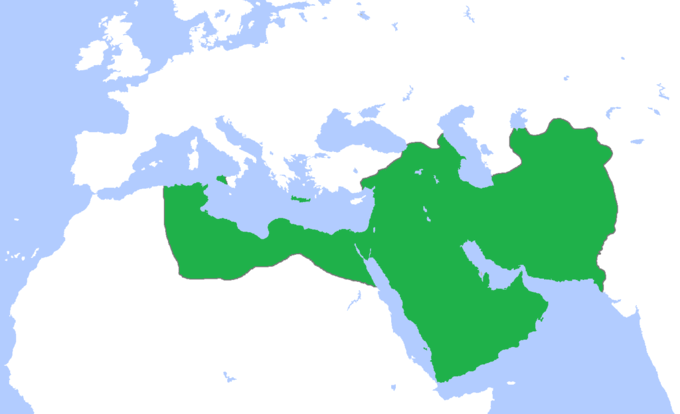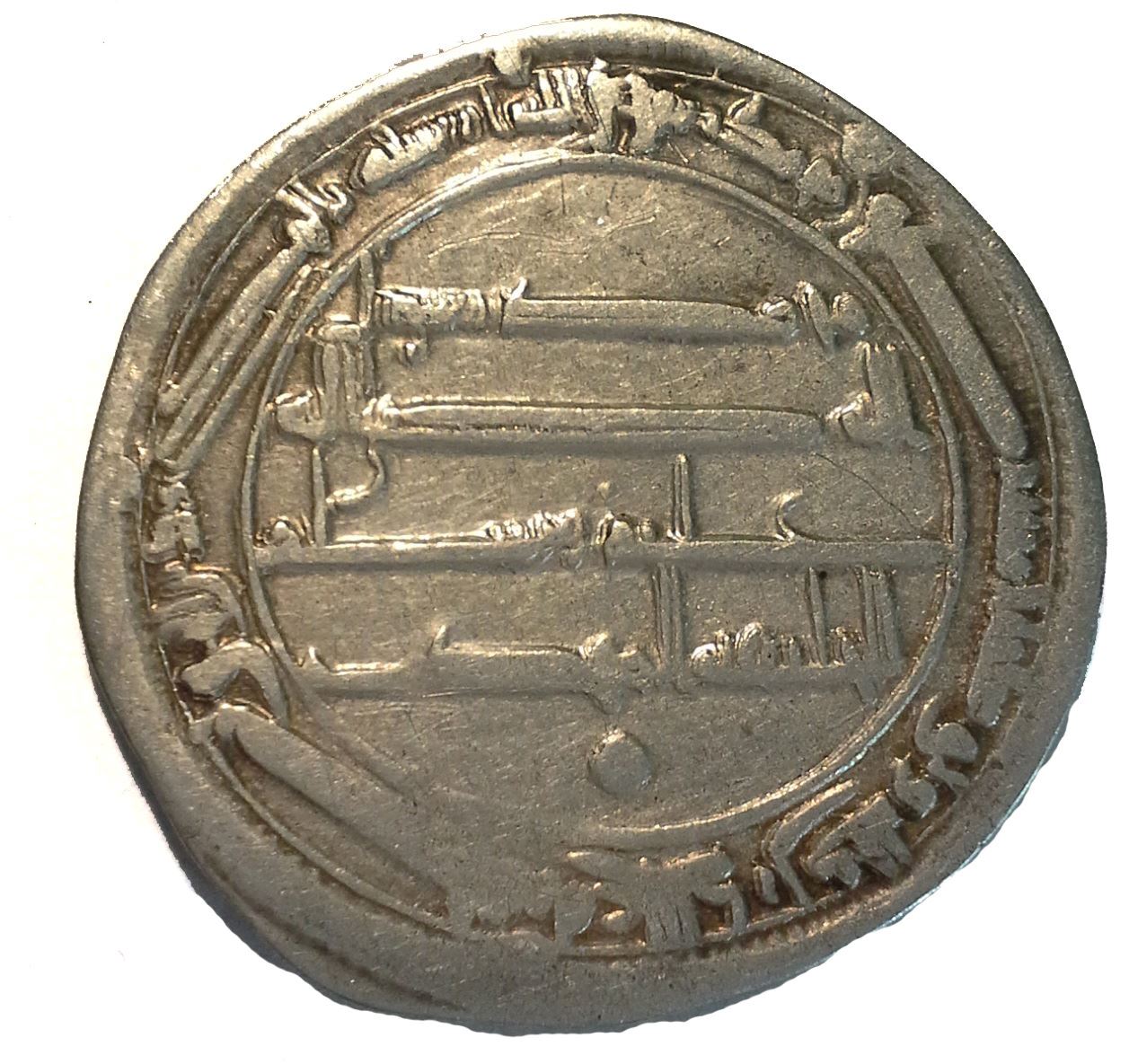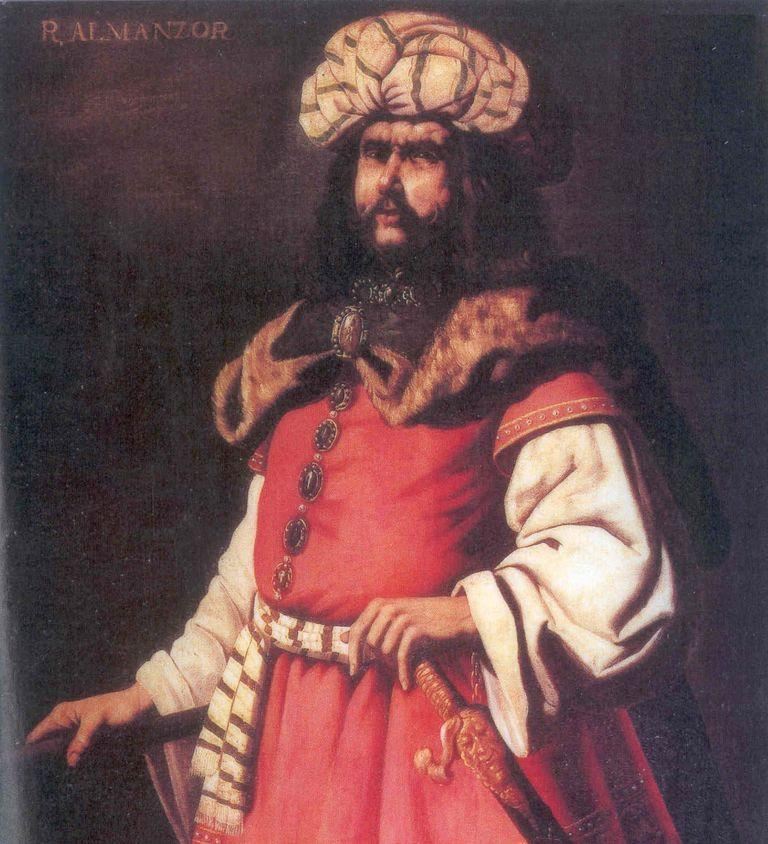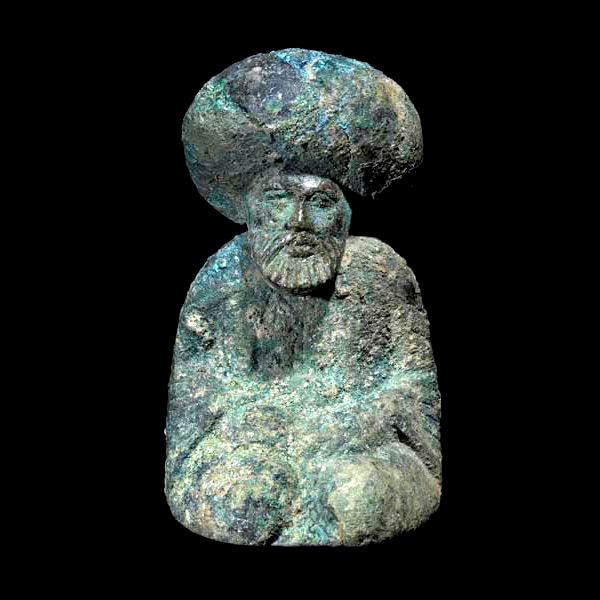The Abbasid Caliphate was the third of the Islamic caliphates to succeed the Islamic prophet Muhammad. The dynasty descended from Muhammad's youngest uncle, Al-Abbas ibn Abd al-Muttalib (AD 566–653), from whom the dynasty takes its name. They ruled as caliphs mainly from their capital in Baghdad in modern-day Iraq, after assuming authority over the Muslim empire from the Umayyads in AD 750 (132 AH).
Abbasid coins have been found in hoards all over Scandinavia, which suggests very active trade routes between the Islamic world and the vikings.
Abbasid coins have been found in hoards all over Scandinavia, which suggests very active trade routes between the Islamic world and the vikings.

Abu Abdallah Muhammad ibn Abdallah al-Mansur (Arabic: أبو عبد الله محمد بن عبد الله المنصور), better known by his regnal name al-Mahdi (المهدي, "He who is guided by God"), was the third Abbasid Caliph who reigned from 775 to his death in 785. He succeeded his father, al-Mansur.
Al-Mahdi reigned for ten years. He imprisoned his most trusted vizier Ya'qub ibn Dawud, and in the year 167 ...
Al-Mahdi reigned for ten years. He imprisoned his most trusted vizier Ya'qub ibn Dawud, and in the year 167 ...
Al-Mansur or Abu Ja'far Abdallah ibn Muhammad al-Mansur ( Arabic: أبو جعفر عبدالله بن محمد المنصور) was the second Abbasid Caliph reigning from 754 AD to 775 AD.
Al-Mansur is generally regarded as the real founder of the Abbasid Caliphate, and during his reign, a committee, mostly made up of Syriac-speaking Christians, was set up in Baghdad with the purpose of translating extant Greek...
Al-Mansur is generally regarded as the real founder of the Abbasid Caliphate, and during his reign, a committee, mostly made up of Syriac-speaking Christians, was set up in Baghdad with the purpose of translating extant Greek...
Harun al-Rashid (Arabic: هَارُون الرَشِيد) was the fifth Abbasid Caliph, and ruled from 786 to 809, during the peak of the Islamic Golden Age.
His time was marked by scientific, cultural, and religious prosperity. He established the legendary library Bayt al-Hikma ("House of Wisdom") in Baghdad, and during his rule the city flourished as a center of knowledge, culture and trade.
...
His time was marked by scientific, cultural, and religious prosperity. He established the legendary library Bayt al-Hikma ("House of Wisdom") in Baghdad, and during his rule the city flourished as a center of knowledge, culture and trade.
...



